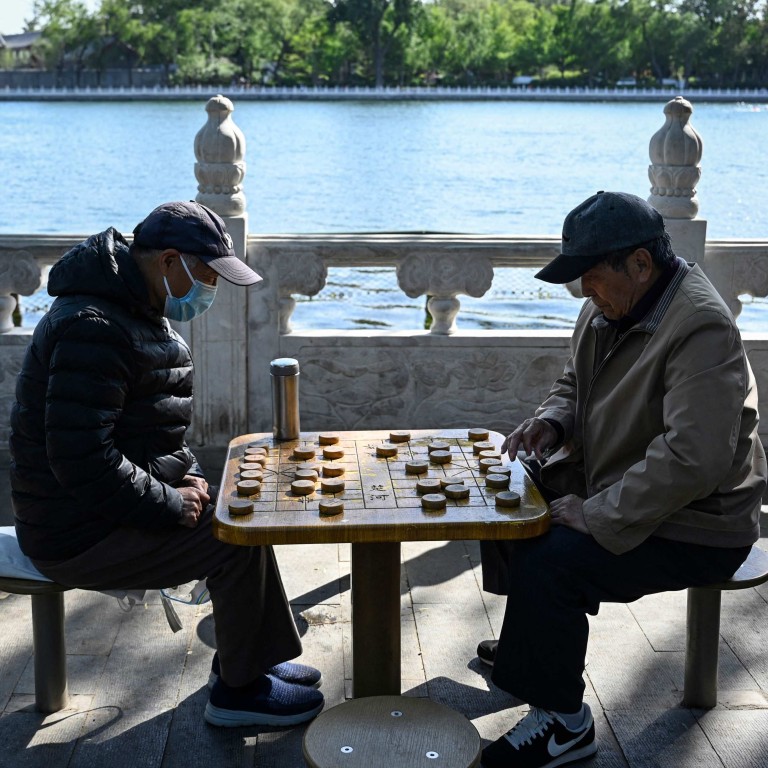
China population: US$970 billion ‘silver economy’ deemed pivotal to overcoming pyramid paradox
- China’s demographic structure is gradually shifting towards an inverted pyramid shape as its population is greying faster, central bank adviser Cai Fang says
- World’s second-largest economy is seeing an unprecedented era of ‘getting old before getting rich’, while also facing falling births, a pension crisis and a workforce shortage
China’s “inverted pyramid” population structure is generating a profound impact on consumption and haunting its long-term growth potential, forcing economists to join demographers in calling for immediate government action.
“If the population pyramid paradox cannot be addressed early on, the conflict between consumer demand and demographic structure will worsen,” Cai, also a prominent labour economist at the Chinese Academy of Social Sciences (CASS), wrote in an article published on the website of China Finance 40 Forum last week.
“This, in turn, will significantly heighten the possibility of economic growth shortfalls.”
China’s demographic challenges, including falling births, fast ageing, a pension crisis, a workforce shortage and the silver economy, are likely to be among the key topics for discussion at the “two sessions” annual parliamentary meetings, which start next week.
It is a global trend that elderly populations have shrinking spending power, but Cai warned the world’s second-largest economy is seeing an unprecedented era of “getting old before getting rich”.
A CASS study in six Chinese cities in 2016 showed that the average spending power of the 60-65 age group was around two-thirds that of the peak level observed in the 20-25 age group. The figures for the 80-85 age group, meanwhile, only accounted for 46 per cent of the peak.
Ageing-related consumption and investment demands must be guided to further expand domestic demand
Weakening demand, along with slowing momentum and productivity, are the three shortfalls seen in China’s economic growth.
“The silver economy, centred on improving the welfare of the elderly and meeting their needs while addressing ageing-related demands, stands as a pivotal strategy in overcoming the population pyramid paradox,” Cai added.
“Ageing-related consumption and investment demands must be guided to further expand domestic demand.”
To stimulate the purchasing power of seniors and to unlock the potential of the silver economy, the government should increase income levels and enhance social welfare for the elderly via economic and social policy reforms, Cai said.
On the supply side, he called for supportive measures for the elderly and ageing-related industries, such as financial subsidies and other policy incentives, to shorten the duration for forming capacity, industrial chains and supply chains.
Industrial policies pertaining to the silver economy should adopt a more “forward-looking” approach, steering technological innovation towards addressing current and future needs related to ageing, he added.
They should also aim to ensure that productivity gains also translate into tangible benefits for the elderly population.
Beijing did release guidelines on boosting the silver economy in January, but many analysts have urged for more immediate action.
Like if the US lost New Mexico: 6 takeaways from China’s 2023 population data
Sun Jie, a professor at the University of International Business and Economics in Beijing, told state broadcaster CCTV that she planned to put forward a proposal at next week’s two sessions, urging for more government subsidies to renovate public and home facilities for senior citizen’s convenience.
Sun is a member of China’s top political advisory body, the Chinese People’s Political Consultative Conference.
A previous government target was to help two million elderly households renovate their living facilities for convenience between 2021-25.
Hu Zuquan, a researcher with the State Information Centre, a governmental think tank under the National Development and Reform Commission, said China’s silver economy stood at 7 trillion yuan (US$972 billion), or 6 per cent of the national gross domestic product (GDP).
He told state media late last month that he expected it to rise to around 30 trillion yuan, or 10 per cent of GDP, by 2035.


